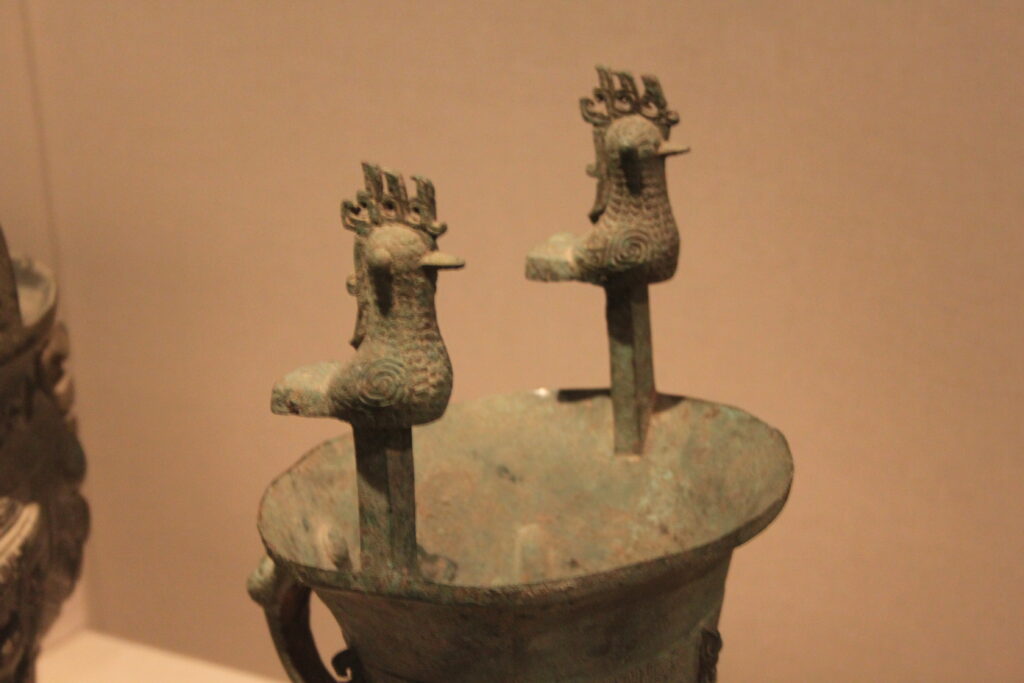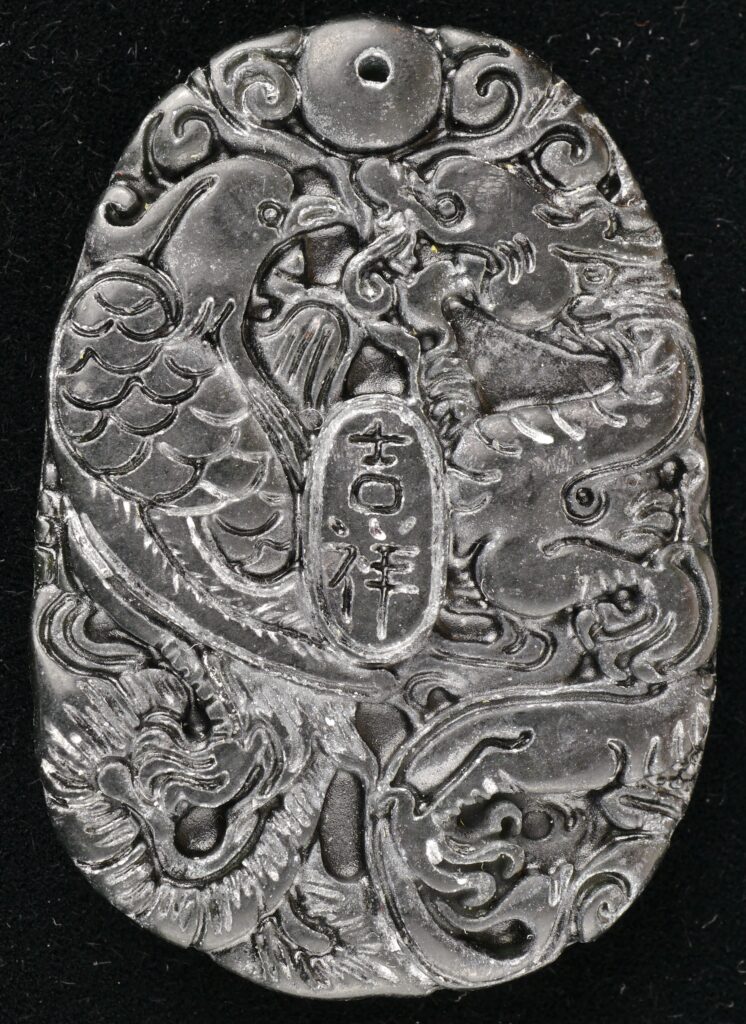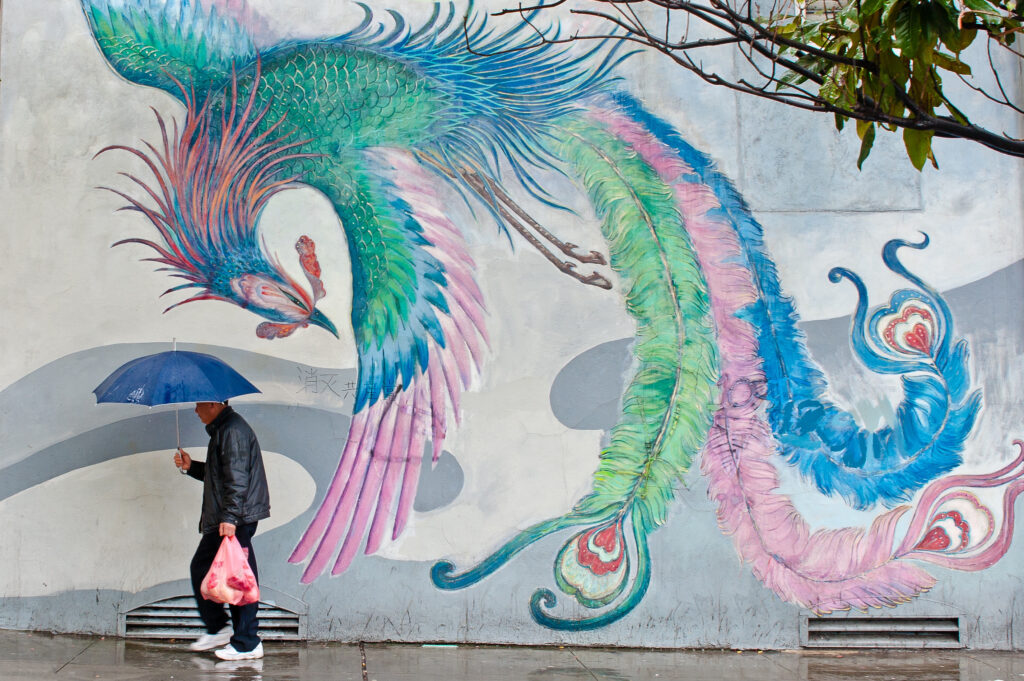The Phoenix is associated with images of long life, immortality, infinite renewal, and continuity. If we look at the Shang ritual cups and the bronze decorations of the Western Zhou period (around 3,000 years ago), we often find repeated images of 5 animals: the lion, the fish, the deer, the dragon, and the Phoenix.

The lion and the fish have their origins in Buddhist icons, while the other three images are often found together, such as inside the coffin of the Marchioness of Dai (dating back 2,200 years). The four animals, the dragon, the tiger, the unicorn (or deer), and the Phoenix are called ‘si ling’ in Chinese, and over time other animals such as the snake and the turtle were added to this group of animals that were worshipped.
Even in the earliest depictions, the Phoenix was portrayed with outstretched wings, often in the act of attacking snakes with its powerful claws.

During the Han period, 2,200 years ago, the Phoenix was used as a symbol to indicate the direction south, and was often depicted as a pair of birds, a male and a female, facing each other: they represent the Emperor, sometimes iconized with the dragon, and the Empress.

An interesting difference in how they are represented in decorations is that the dragon is used to fill all the available space, for example on a vase, while the Phoenix is used to fill a specific space in the decoration, for example around trees, rocks, and flowers.

This symbol has been used on objects in China, often in jade, for over 7,000 years, originally on good luck totems, and then, for about 2,000 years, to represent the power given by the heavens to the Empress.
A Phoenix decorating a house highlighted the loyalty and honesty of the people who lived there: it was believed to control the 5 tones of Chinese music and represented the Confucian virtues of loyalty, honesty, decorum, and justice.
Considering the importance of this mythical bird, it was inevitable that it would also be used to decorate tombs and sepulchres. The right to wear jewelry representing the Phoenix was reserved for important people, and indicated that the wearer was a person of high moral values.